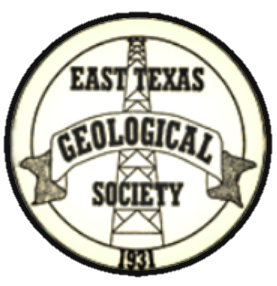JANUARY 2022 LUNCHEON MEETING
Julie Bloxson
presents
Potential for REEs in Large Evaporitic Bodies:
Examples from North American Phanerozoic Salt Bodies
11:30 AM Wednesday, January 19, 2022
at Hollytree Country Club
6700 Hollytree Dr
Tyler, TX 75703
Cost: $25
Abstract
With increased demand for rare earth elements (REEs) that coincide with our increased technological advances, we are looking towards new sources. While REEs are typically found in alkaline igneous rocks, new potential sources lie in extensive evaporitic bodies. Even at low concentrations (for ex., 7 ppm of lithium), these elements could have commercial value, could also be useful indicators of palaeoceanographic conditions, and lead to insights in deposition, diagenesis and halokinesis of salt bodies. Here, we present and attempt to interpret trace and bulk geochemistry of several large evaporitic bodies: Salina Group, Louann Salt, Hutchison Salt, Salado Salt, and modern-day Searles Lake deposits. Modern seawater shows to have an enrichment of REEs, and preliminary work on the Salina Salt from the Appalachian Basin, the Salado Salt from Texas, Hutchison Salt from Kansas, and modern salt precipitates from Searles Lake, CA indicate that the trace element geochemistry of salts are highly variable, including REEs. The bulk geochemistry shows that these bodies are primarily halite, with some containing anhydrite, shale laminations, and carbonates. There are also trace amounts of various other elements, including relatively high amounts of Sr (0.0 – 1663 ppm), Fe (0 – 462 ppm), Mn (0 – 208 ppm), Nd (0 – 1237 ppm), Pr (0 – 817 ppm), Ce (0 – 468 ppm), La (0 – 471 ppm), amongst others. The REE enrichment in various samples can be argued to be indicators of authigenic materials compared to diagenetically altered or weathered evaporite minerals. To further determine correlations amongst the data, factor analysis can help to identify original sources of trace elements; however, because of tectonically driven fluid flow/movement during subsequent orogenic events and/or diagenesis, these should be taken with a grain of salt. Overall, if found with high enough concentrations, these salt bodies, which are often brined for caverns, could prove to be economically valuable.
Biography
Julie received her B.S. in geology from The University of Akron in 2008, where she focused her undergraduate research on core analysis of tidal rhythmite deposits associated with Pennsylvanian coal seams within the Appalachian Basin. She received her M.S. in geology from Kent State University in 2012, studying the Grimbsy Sandstone/”Clinton Sands” in Eastern Ohio. This project focused on using a combination of core and well log analysis to extrapolate porosity and permeability across a county, and determined the controlling factors of porosity/permeability in these tight gas sands. She received her Ph.D. from Case Western Reserve University in 2017, focusing on the Utica Shale and controls on deposition. Julie continued this work at the Ohio Geological Survey, working within the Energy Group on various subsurface mapping projects that focused on salt deposits, carbon sequestration, and unconventional resources for two years. She is currently an assistant professor at Stephen F. Austin State University since 2018 and heads the East Texas Core Repository at the Science Research Center, where she has created the Core Lab on campus. This facility focuses non-destructive core analysis and correlates core data to well log data for better subsurface analysis for natural resources and energy-related issues. Her goal for the facility is to allow students to gain the necessary skills for industry and research and to facilitate a connection between local industry and academia for future research. Currently, she is focusing on critical minerals and REEs in evaporites and shales across North America, and characterizing conventional reservoirs for CCUS and EOR.
